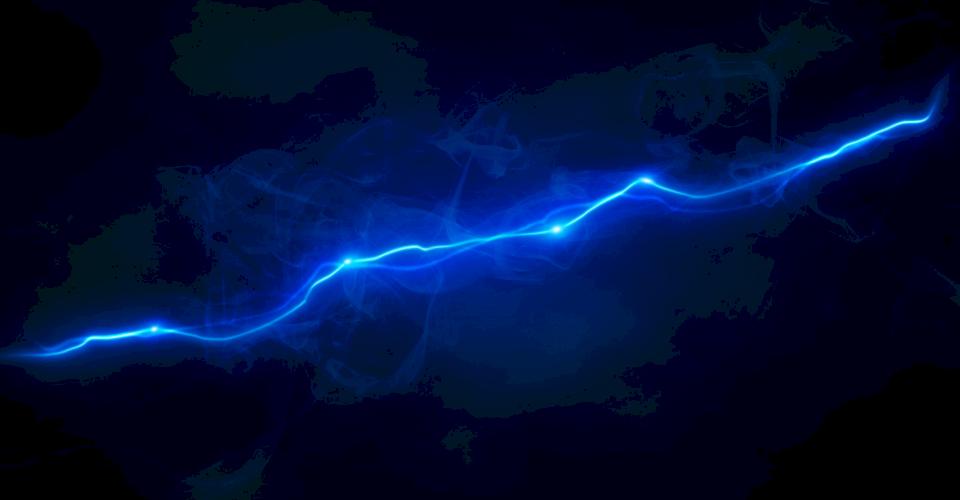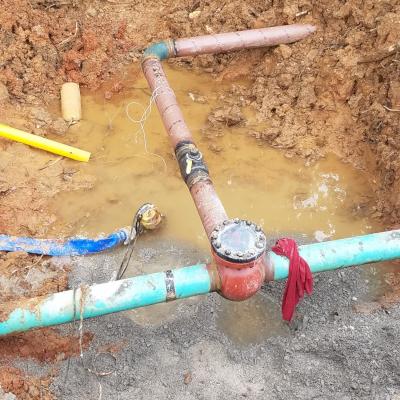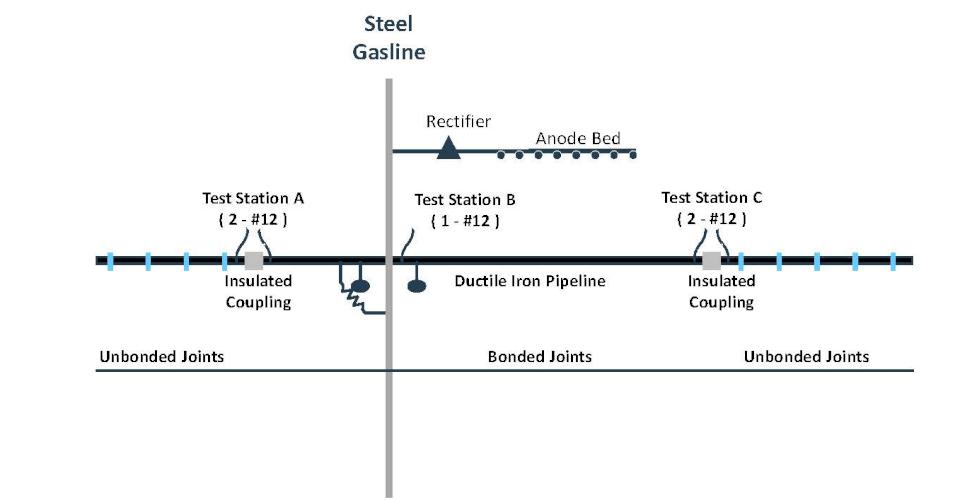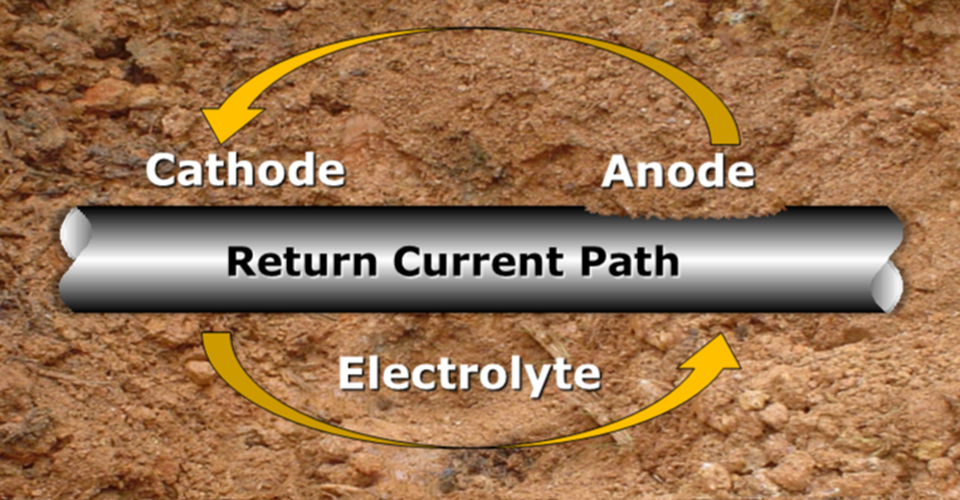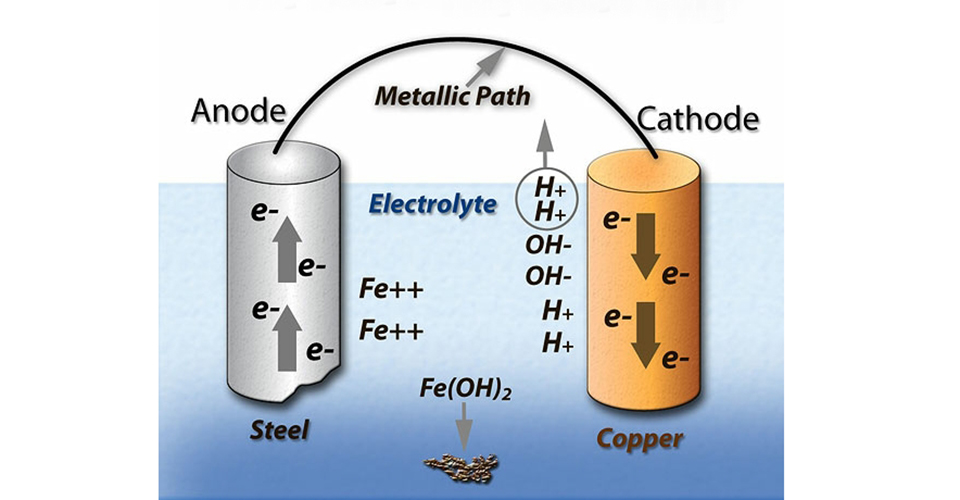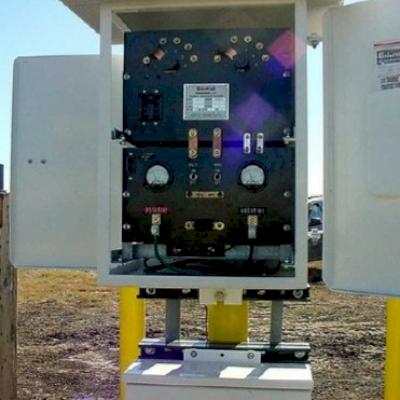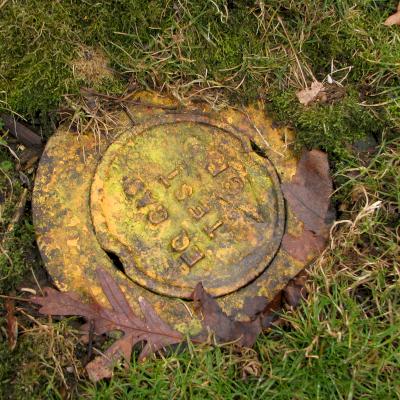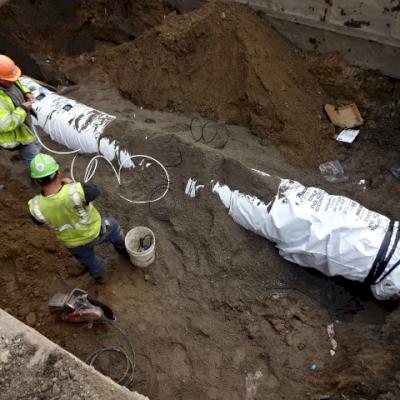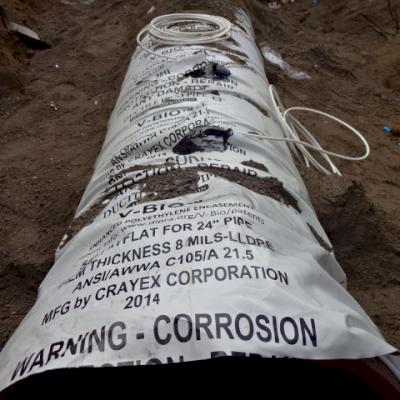In today’s construction world, things are getting more and more technical and precise. As the waterworks industry evolved over the last 100 years, our understanding of installation processes has as well, specifically concerning stray currents emitted in the ground from steel gas or oil pipeline’s cathodic protection system and how they might influence the corrosion of adjacent Ductile iron (DI) pipelines.
What is Stray Current?
Stray currents pertaining to underground pipelines are direct currents flowing through the earth from a source not related to the pipeline being affected. When these stray direct currents accumulate on a metallic pipeline or structure, they can induce electrolytic corrosion of the metal or alloy. Sources of stray current include cathodic protection systems, direct current power trains or streetcars, arc-welding equipment, direct current transmission systems, and electrical grounding systems.
To cause corrosion, stray currents must flow onto the pipeline in one area, travel along the pipeline to some other area or areas where they then leave the pipe (with resulting corrosion) to re-enter the earth and complete the circuit to their ultimate destination. The amount of metal lost from corrosion is directly proportional to the amount of current discharged from the affected pipeline.1
Know What's Below!
As road construction ramps up in the United States, the issue of stray current has become something municipalities and engineers should be aware of given most road Right of Ways (ROW) have utilities located within them. The coordination between utilities and the Department of Transportation is vital to ensure that existing and new utility pipelines are not adversely impacted by stray currents from a steel gas or oil pipelines’ cathodic protection system.
It should be noted that cathodic protection of oil and gas pipelines is not a choice in the United States. It is a Federal Law due to the potential safety hazard to people and the environment should one fail. For waterlines, cathodic protection is a design decision based upon weighing the likelihood versus the consequences of a corrosion-related pipeline failure.
A steel gas or oil pipeline is a continuous conduit without gasketed joints. Certified welders connect the pipeline in the field by welding the pipes together. Once the steel pipeline is set in place, the applied corrosion protection mechanism, namely cathodic protection, requires periodic inspections and perpetual maintenance.
Corrosion Protection Using Cathodic Protection
Corrosion protection can be achieved by cathodic protection (CP). CP is a designed process where direct current (DC) is applied to an exposed metal surface to slow and redirect corrosion currents. When properly used, CP steers the destructive currents safely away from the pipeline metal and onto a planned sacrificial metal anode located nearby.
How Does Cathodic Protection Work?
Cathodic protection generally works by placing an anode or anodes (external devices) in a conductive electrical connection with the pipeline to create a protective circuit. Current flows from the anode through the connection to the surface of the pipeline, now forced to be a cathode, an electrically protected surface Remember, corrosion of metal occurs where the current LEAVES the metal surfaces, not where it comes on to it. It's essentially the OPPOSITE of a lightning strike, and of course with dramatically less energy involved.
A sacrificial anode consists of a galvanically less noble metal than the metal to be protected and is electrically connected to the pipeline to be protected. The anode is more reactive to surrounding corrosive environments. The sacrificial anode corrodes, protecting the metal of the pipeline. The anode beds for the gas or oil pipelines’ cathodic protection are located close to existing or new metallic pipelines. This closeness in proximity affects corrosion.
A Real-Life Scenario On Handling Potential Stray Current
Recently a 12-inch waterline relocation project located near Nashville, TN, was brought to our attention. The project involved the widening of approximately 3,000 linear feet of an existing two-lane road to a four-lane road. All existing utilities within the ROW were to be relocated and extended. Within the road widening project was an existing 60-foot steel gas line easement that ran almost perpendicular to the road.
The following is a brief synopsis of the process to determine if additional protection is required for the Ductile Iron (DI) pipe.
Make Contact and Confirm
- Acquire general project information – Typically, the Plan and Profile of crossing, utility, civil engineer, gas or oil companies contact information, and exact project location.
- Contact the gas or oil company and gather information on the cathodic protection system used for their pipeline – generally looking for the location of the cathodic protection rectifier and anode beds. In doing so, be sure to confirm that the inspections and maintenance of anodes contained within the CP systems' original design are indeed occurring. Without that, you've got a system planned to protect the pipeline that's destined to fail. Like a lawn never mowed, it just becomes an utter mess.
Meet On-Site and Field Test
- If sufficient information on the cathodic protection rectifier and anode beds is not known, set up a meeting with the gas or oil company representative on-site at the potential pipeline crossing to review the cathodic system.
- Based upon the location of the rectifier, anode bed, and type of cathodic system used, the DI pipe manufacturer and the Ductile Iron Pipe Research Association (DIPRA) will determine if field testing is required. Field testing helps to determine the exact location of the cathodic protection zone of influence.
Click the red arrow in the image below to view a helpful video on DIPRA's Design Decision Model and corrosion protection of Ductile iron pipes.
Gather Recommendations
- After gathering appropriate information, the DI pipe manufacturer and DIPRA can provide recommendations concerning the protection of the DI pipe. The recommendations generally advise no additional protection of the pipe is needed. For more information on DI pipe and corrosion, see the above video link to the Design Decision Model.
- On rare occasions such as extremely corrosive soils, a proposal would be to wrap the pipe with polywrap/V-Bio® within the gas line easement or cathodic protection zone of influence. Or wrap the pipe with polywrap/ V-Bio® and bonding the joints while providing a current tie back through direct contact to the gas pipeline gas system.
Need Assistance with Your Waterworks Project?
The above recommendations are easily applied to the pipe and will not increase the cost of the DI pipe substantially. The little amount of additional work required to provide a recommendation for the DI pipe is provided at no charge to the owner or engineer. If you have any questions or need additional information, please feel free to contact your local McWane Ductile Representative.
We offer multiple services for our customers extending far beyond manufacturing Ductile iron pipe. From design to installation, we take great pride in providing education and assistance to water professionals throughout the water and wastewater industry.
Check out all our digital offerings
Sources
1. W. Peabody, Control of Pipeline Corrosion, National Association of Corrosion Engineers, Houston, Texas.
2. Richard W. Bonds, P.E., Corrosion Control - Stray Current Effects on Ductile Iron Pipe, Ductile Iron Pipe Research Association, Birmingham, Alabama



